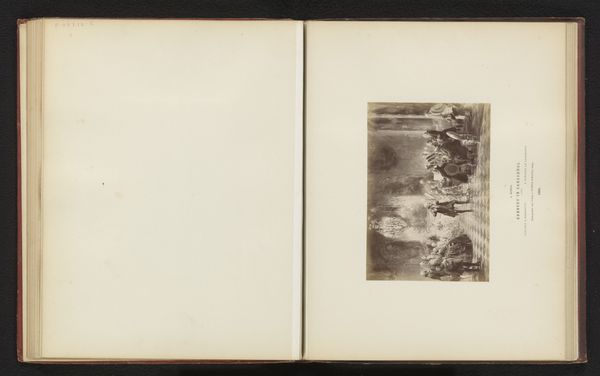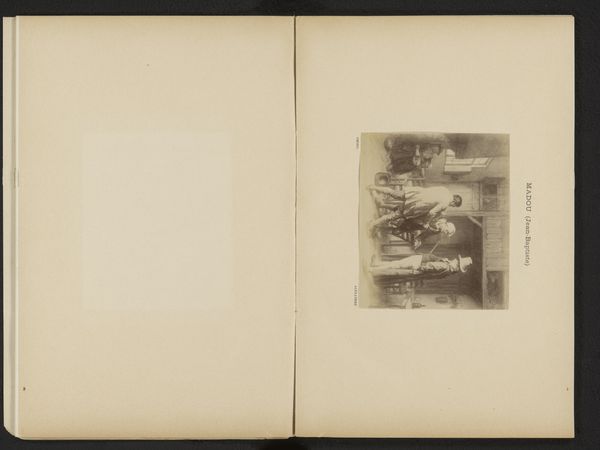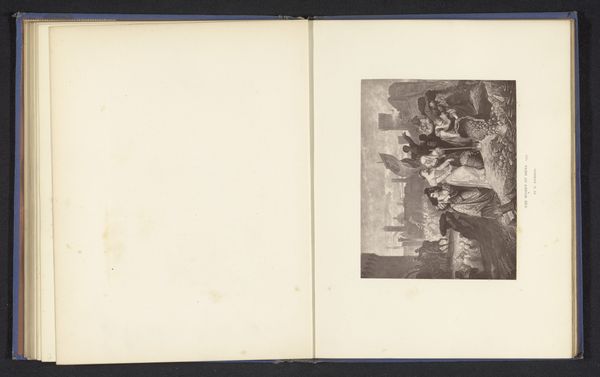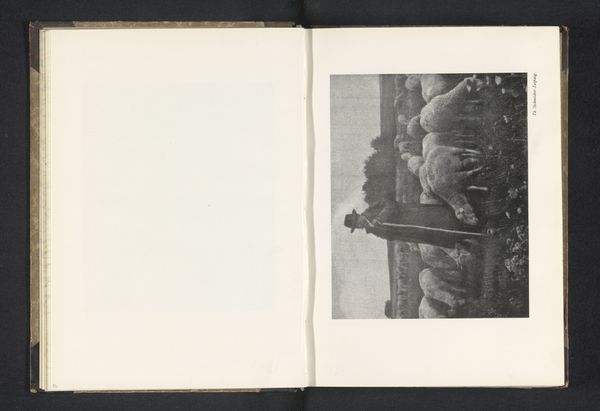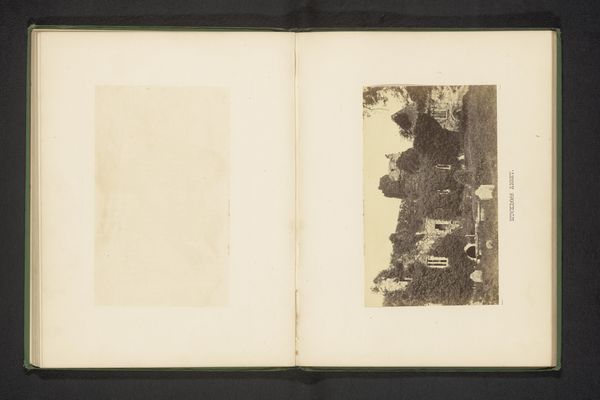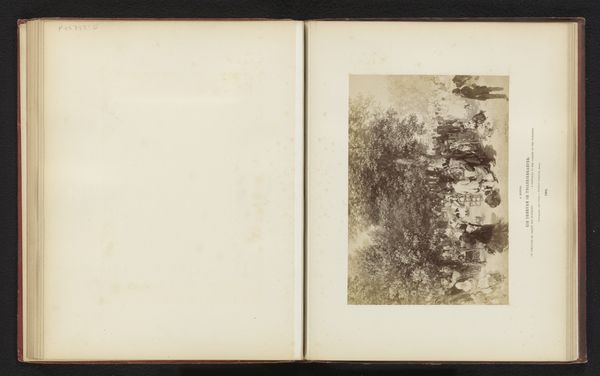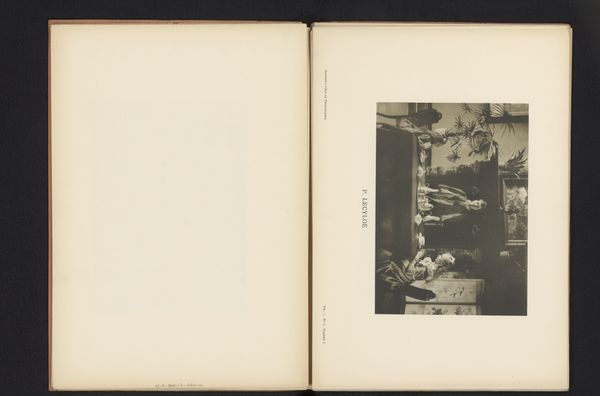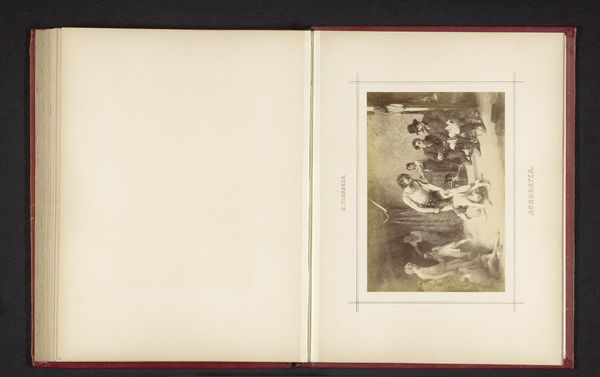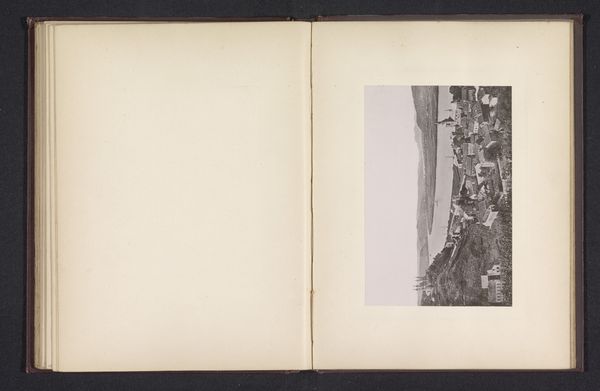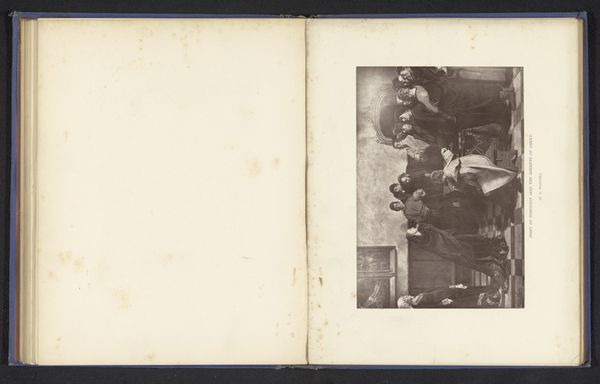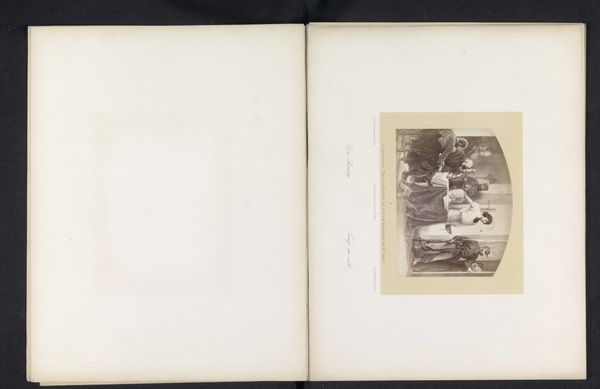
Fotoreproductie van een schilderij van een schoolbezoek door Frederik Willem I van Pruisen door Adolf Menzel before 1868
0:00
0:00
print, photography, gelatin-silver-print
#
portrait
# print
#
photography
#
gelatin-silver-print
#
academic-art
#
watercolor
Dimensions: height 135 mm, width 180 mm
Copyright: Rijks Museum: Open Domain
Editor: So, this gelatin-silver print is a photograph of Adolf Menzel's painting, "School Visit of Frederick William I." It's a little grainy, as you might expect from this kind of image, but it seems to capture the intensity of the classroom scene pretty well. What strikes you about it? Curator: Considering the image is a photographic reproduction of a painting, it's important to think about the chain of production here. Menzel's original labor is mediated through photography, transforming painting into a reproducible print. We need to consider the economic and social context in which this photograph was produced. What role did these photographic reproductions play in disseminating art to a wider audience and shaping perceptions of history and power? Editor: That’s interesting! It makes me think about how readily available art is today versus how something like this was disseminated in its time. Curator: Exactly! Who had access to such prints? What kind of viewing experience did they afford compared to the original painting? Consider the materiality: gelatin-silver, a process reliant on industrial production. Each stage – the painting, the photography, the printing – reflects different levels of material access and technical skill. How does the use of photography alter the perception and reception of the original work? Editor: So it's less about the scene depicted and more about the layers of production. Curator: Not only, but also. We must unpack these processes. It shows a shift in how art and information circulated, touching on early forms of mass media and the evolving role of images in shaping cultural understanding. The very existence of this photograph changes the accessibility and, therefore, the impact of the original painting. Editor: That's a whole new way of looking at art that I hadn’t really considered. It makes you realize how the art itself changes its significance when it becomes part of an industry. Curator: Precisely. By focusing on materials and modes of production, we unearth crucial insights into art's connection with labor, technology, and broader economic forces.
Comments
No comments
Be the first to comment and join the conversation on the ultimate creative platform.
